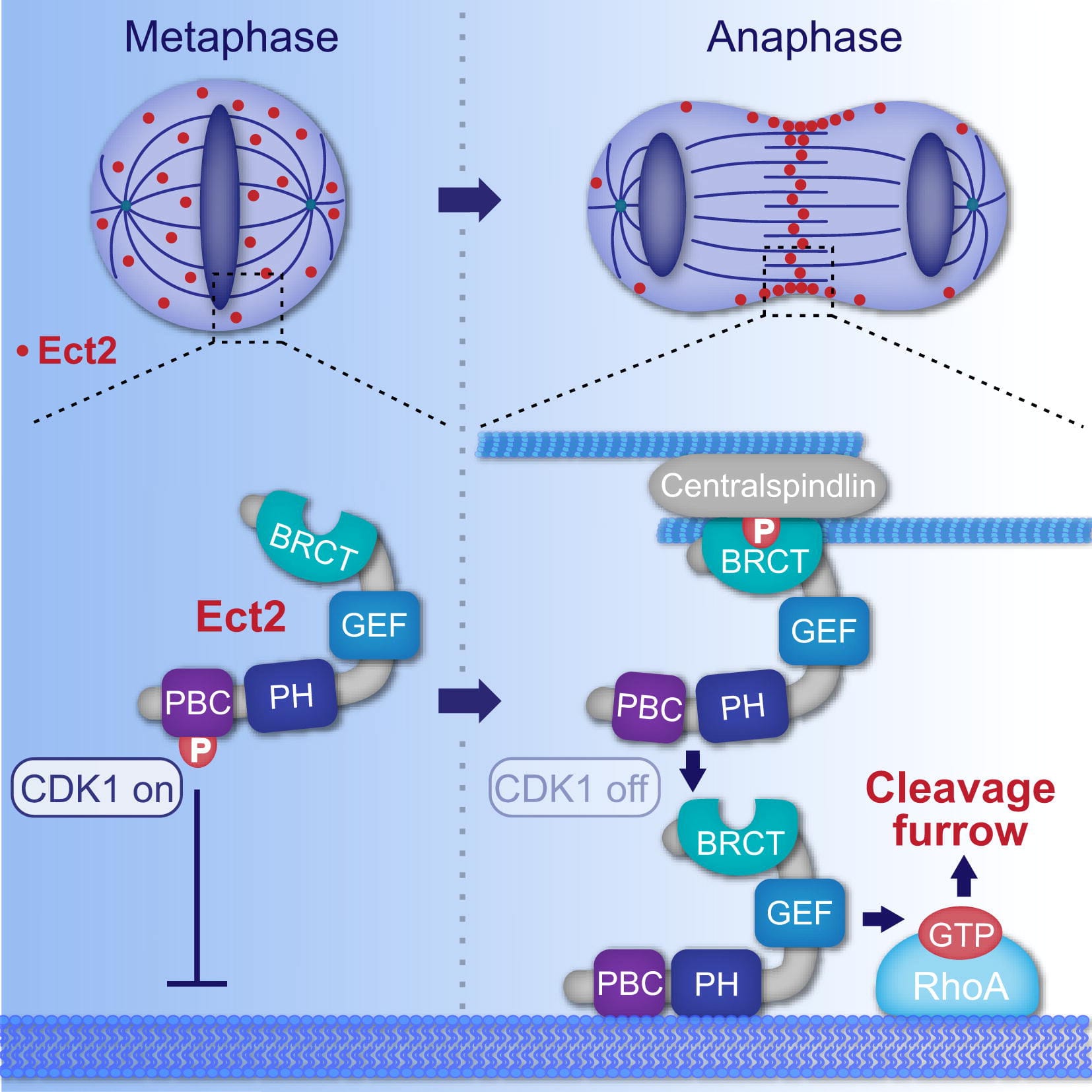Ever wonder how a single cell neatly splits into two identical copies? The answer lies in the fascinating process of cytokinesis, and a key player in this microscopic marvel is the cleavage furrow. This article delves into the intricate mechanisms, critical functions, and clinical significance of this tiny, yet powerful structure, exploring its role in cell division, comparing it to plant cell division, and examining its implications for human health and disease. Get ready for a captivating journey into the world of cellular biology!
The Cleavage Furrow: Cell Division’s Masterful Zipper
The cleavage furrow—it’s a name that might sound technical, but the process itself is surprisingly elegant. Imagine a cell preparing to divide, its cytoplasm slowly pinched in the middle until it splits cleanly into two. That “pinching” action is the work of the cleavage furrow, a dynamic structure essential for cell reproduction, growth, and overall organismal health. Without it, cells wouldn’t be able to reproduce.
The Intricate Machinery of Cell Division
The magic of the cleavage furrow lies in the coordinated actions of cellular components. The primary players are actin filaments—flexible, rope-like structures—and myosin II motor proteins—tiny motors that “walk” along the actin filaments. These proteins work together to form a contractile ring, a structure positioned just beneath the cell’s surface.
This contractile ring acts like a drawstring bag, slowly tightening and constricting the cell in the middle. The myosin motors pull inward on the actin filaments, causing the cell membrane to invaginate, creating the visible cleavage furrow. The cell progressively narrows until it finally splits, resulting in two genetically identical daughter cells.
But this process isn’t simply actin and myosin working in isolation. A complex symphony of other proteins acts as supervisors, ensuring the process proceeds accurately and efficiently. Rho GTPases, for example, act as master regulators, controlling the construction and function of the contractile ring. Their role appears to be crucial for the precise timing and execution of the furrow formation. Disruptions in the action of these supervisory proteins can lead to serious errors in cell division.
Animal vs. Plant Cells: Two Distinct Strategies for Cytokinesis
While the cleavage furrow is the hallmark of cytokinesis in animal cells, plant cells employ a strikingly different mechanism. Plant cells possess rigid cell walls, which prevent the inward pinching action of a cleavage furrow. Instead, they construct a new cell wall, called the cell plate, between the dividing nuclei. This cell plate eventually matures into a complete wall, separating the two new daughter cells. This fascinating difference highlights the remarkable adaptability of biological processes to suit different cell types and structures.
Cleavage Furrow Dysfunction: When Cell Division Goes Wrong
A properly functioning cleavage furrow is essential for healthy cell reproduction. Disruptions in this process can have serious consequences. One of the most significant implications is the potential for uncontrolled cell growth, a hallmark characteristic of cancer. Scientists believe that problems with the precise machinery involved in cleavage furrow formation are among the factors that contribute to the development of cancer. The inability of the process to keep pace with cell proliferation can lead to uncontrollable cell multiplication. This is why understanding the intricate workings of the cleavage furrow is crucial for developing new cancer therapies—interventions that could potentially disrupt improper cell division and halt tumor growth.
Ongoing Research: Unraveling the Secrets of Cytokinesis
The study of the cleavage furrow is an active and evolving field of research. Many aspects of the process remain unclear. Scientists are intensely investigating the precise interactions of the many proteins involved, hoping to fully understand how this fundamental process regulates cell division and what occurs when it malfunctions. The findings of this research could significantly impact medicine and our understanding of fundamental cellular mechanisms. Further understanding could lead to advancements in our ability to treat a wide range of diseases.
Future Directions and Unanswered Questions
While significant progress has been made, much remains to be understood about the cleavage furrow. Ongoing research explores:
- Precise roles of regulatory proteins: The detailed contributions of each protein that orchestrates the process require more detailed investigation.
- Interactions between signaling pathways: Multiple pathways influence the cleavage furrow. The exact communication and coordination among these pathways need further clarification.
- Root causes of cytokinesis errors: Identifying the underlying reasons for cytokinesis errors in diseased cells is crucial for developing more effective treatments.
The future of cleavage furrow research offers immense potential for uncovering further details. New findings continually refine our understanding of this fundamental process, unlocking deeper insights into the machinery of life and improving our capacity to treat diseases associated with cell division issues.
Delving Deeper: The Cleavage Furrow in Mitosis
Let’s take a closer look at the cleavage furrow’s role in mitosis, the process of nuclear division. As the cell completes mitosis, ensuring each daughter cell receives a complete set of chromosomes, the stage is set for cytokinesis—the physical separation of the cell into two. This is where the cleavage furrow takes center stage.
The Cleavage Furrow’s Step-by-Step Action
The creation of the cleavage furrow is a dynamic multi-step process:
- Mitosis Completion: The cell finishes mitosis, accurately segregating chromosomes into two identical sets.
- Contractile Ring Assembly: A contractile ring, composed primarily of actin and myosin II, forms at the cell’s equator. This ring acts as the engine for cell division.
- Ring Contraction: Myosin II “walks” along actin filaments, utilizing ATP for energy. This movement contracts the ring, constricting the cell and creating the visible cleavage furrow.
- Cell Separation: The furrow deepens until it completely separates the cell into two independent daughter cells, each with an identical set of chromosomes.
Plant Cell Division: A Different Approach
It’s crucial to remember that the cleavage furrow mechanism applies specifically to animal and some algal cells. Plant cells, due to their rigid cell walls, divide via a different mechanism, employing a cell plate instead. This highlights the diversity of strategies that biological processes can adopt to achieve identical outcomes.
Cleavage Furrow vs. Cell Plate: A Side-by-Side Comparison
To further emphasize the contrasting mechanisms of cytokinesis, let’s directly compare the cleavage furrow (animal cells) and the cell plate (plant cells):
| Feature | Cleavage Furrow (Animal Cells) | Cell Plate (Plant Cells) |
|---|---|---|
| Structure | Inward pinching of the cell membrane | Newly formed cell wall between daughter cells |
| Mechanism | Contraction of an actin-myosin ring | Fusion of vesicles containing cell wall materials |
| Key Players | Actin, myosin, Rho GTPases | Golgi apparatus, microtubules, vesicles, cellulose, pectin |
| Cell Wall | Absent | Present; dictates the division process |
| Timing (Mitosis) | Late anaphase/early telophase | Telophase |
Understanding these differences underscores the incredible adaptability of biological systems.
Clinical Implications and Future Research
Failures in either cleavage furrow formation or cell plate formation can lead to aneuploidy (abnormal chromosome numbers), a condition strongly associated with cancer and other developmental disorders. This underscores the critical role of proper cytokinesis in maintaining cellular and organismal health. Ongoing research will undoubtedly continue to refine our understanding of cytokinesis, with implications for the treatment of diseases arising from impaired cell division.
In conclusion, the cleavage furrow is a remarkable biological structure, a testament to the meticulously orchestrated processes underlying cellular life and an area of active investigation with potentially vast implications for human health.
- Discover Lyddington, Rutland: A Hidden Gem in the Heart of the English Countryside - November 29, 2024
- Takht-e Jamshid (Persepolis), Iran: A Comprehensive Guide to the Ancient Wonder - November 29, 2024
- Farleigh Hungerford Castle: A Comprehensive Guide to Exploring This Somerset Medieval Fortress - November 29, 2024















